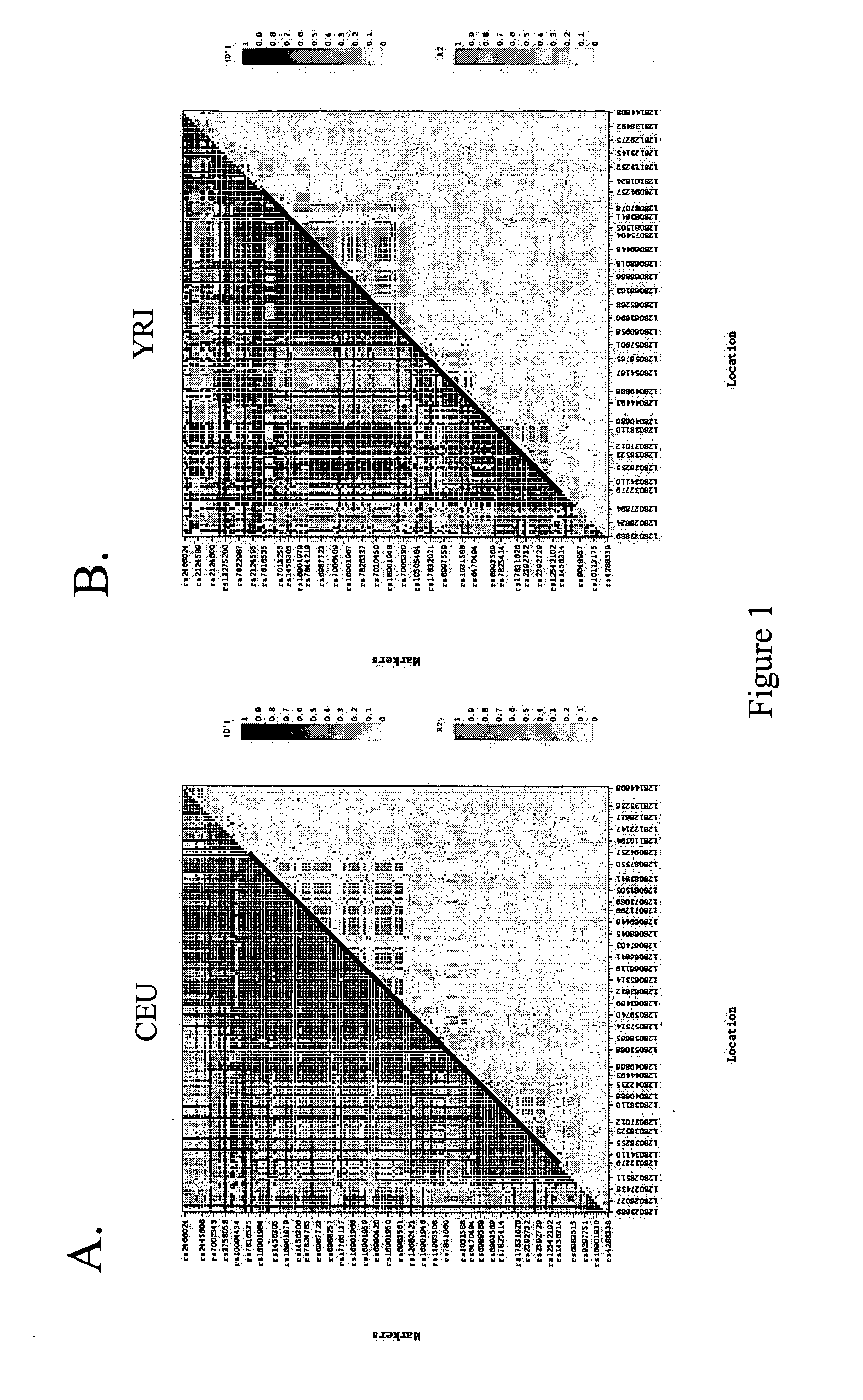Cancer susceptibility variants on chr8q24.21
a cancer susceptibility and variant technology, applied in the field of cancer susceptibility variants on chr8q24.21, can solve the problems of low cure rate, uncontrolled growth, and low cure rate of prostate cancer, and achieve the effect of worse cancer prognosis
- Summary
- Abstract
- Description
- Claims
- Application Information
AI Technical Summary
Benefits of technology
Problems solved by technology
Method used
Image
Examples
example 1
Identification of the LD Block C Region Associated with Prostate Cancer
Patients Involved in the Genetics Study
[0262]A population based list of all prostate cancer patients that were diagnosed with prostate cancer in Iceland from 1955 to 2005 form the basis for this study. Patients have been invited to join the study since 2001 on an ongoing basis. As of October 2006, blood samples from 1564 prostate cancer patients have been collected. Of that collection 1455 prostate cancer patients in addition to 4182 control individuals were genotyped with the Illumina 317K Bead chip.
Statistical Methods for Association and Haplotype Analysis
[0263]For single marker association to the disease, Fisher exact test was used to calculate a two-sided P-value for each individual allele. When presenting the results, we used allelic frequencies rather than carrier frequencies for SNPs and haplotypes. Haplotype analyses were performed using a computer program we developed at deCODE called NEMO (NEsted MOdels...
example 2
Verification of Association with Prostate Cancer in Several Cohorts
[0275]Additional analysis further supports the presence of the variants associated with prostate cancer on chromosome 8q24. As depicted in Table 7, both the rs16901979 1 allele and HapC were found to be associated with prostate cancer in two cohorts of Caucasian ancestry and one cohort of African ancestry.
[0276]Replication study of association of single markers and haplotypes within LD Block C with prostate cancer. The cohorts are comprised of samples of Caucasian origin from Chicago, U.S. (Northwestern University) and Spain (Zaragoza University Hospital), and an African American cohort from Michigan, U.S. (University of Michigan). Allele codes for SNPs are as follows: 1=A, 2=C, 3=G, 4=T, and X=any allele
TABLE 7Association of SNP markers on Chr8q24 to prostate cancer (PrCa) in Spain and the United States# of IndividualsAllele frequencyAffected PhenotypeAffectedControlsp-valRRAffectedControlsAllelePARPrCa-Chicago41923...
PUM
| Property | Measurement | Unit |
|---|---|---|
| Electric charge | aaaaa | aaaaa |
| Current | aaaaa | aaaaa |
| Current | aaaaa | aaaaa |
Abstract
Description
Claims
Application Information
 Login to View More
Login to View More - R&D
- Intellectual Property
- Life Sciences
- Materials
- Tech Scout
- Unparalleled Data Quality
- Higher Quality Content
- 60% Fewer Hallucinations
Browse by: Latest US Patents, China's latest patents, Technical Efficacy Thesaurus, Application Domain, Technology Topic, Popular Technical Reports.
© 2025 PatSnap. All rights reserved.Legal|Privacy policy|Modern Slavery Act Transparency Statement|Sitemap|About US| Contact US: help@patsnap.com


